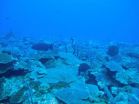INFORMATION:
The National Research Foundation of Korea supported this work.
Location-based ads need more than closeness to overcome creepiness
2015-07-21
(Press-News.org) Location-based advertisements may pinpoint customers geographically, but often miss the target because customers may find the ads creepy and intrusive, according to an international team of researchers. To overcome this negativity, the researchers suggest advertisers invite their customers to help tailor ads they might receive.
While being physically close to a product or shop improved attitudes about local advertisements on their mobile devices, customers felt significantly better about both the advertisement and location-based advertising when they had a hand in selecting the ads, said S. Shyam Sundar, Distinguished Professor of Communications and co-director of the Media Effects Research Laboratory.
"What we found is when you ask the user to choose categories of ads they want to see and the ads are timely and relevant, the ads are more successful," said Sundar, who worked with Sangmee Lee, doctoral student, and Ki Joon Kim, research professor, both from the department of interaction science at Sungkyunkwan University, Korea.
Products that interested the customer -- high-involvement products -- also improved customer attitudes on location-based advertising. Lee pointed out that user buy-in may not be necessary when the ad features a high-involvement product.
"If the advertiser knows that the user is interested in a product or service, then there is no need to offer tailoring options in order to gain user acceptance of location-based ads," she added.
The researchers, who released their findings in the current issue of Computers in Human Behavior, found that receiving this buy-in from potential customers helps alleviate the user's perception that the ad was intrusive.
"The perceived intrusiveness of the ad being displayed is the one thing that gives customers pause," said Sundar. "But, if the ad is customized by them and features a high-involvement product, it is seen as less intrusive."
Sundar said the research may help unlock the potential of local advertising on mobile devices. Advertisers previously hoped that location-based technology would help them reach customers as they were making buying decisions. However, the feeling of being tracked has hampered the full adoption of the technology, he added.
"Advertisers are still hoping to make location-based advertising work," said Sundar. "On one hand, people use it routinely because it's convenient, but it also conjures up images and feelings that they are being tracked."
Sundar said that the results reinforce the theory that offering people choice increases their engagement with technology.
"The study reflects the agency model of customization -- that it gives a person a sense of self and can lead to greater involvement in media content," Sundar said. "People who have tailored their interests are more likely to process and engage with information and appreciate those offers."
Kim said these findings offer insights not only for advertising, but for various forms of mobile communications that use location-relevant information, such as map applications, search engines and recommendation services.
"Our findings can help understand how users share, process and evaluate information on the mobile platform," he added.
The researchers recruited 115 university students in Seoul, Korea to take a simulated tour of a city street near the university using a 3-D streetscape display. A simulated smartphone screen was displayed next to the view of the streetscape.
Participants filled out a survey of demographic information and were randomly divided into different groups to test how location, customization, and product involvement influenced their decisions.
As the participants navigated through the street, the researchers sent messages to the participants' online smart phone displays, advertising businesses that were close or far away and products that they may or may not have been interested in based on details from an initial questionnaire. Members assigned to the customization group were able to select preferred product categories after they filled out the questionnaire.
After the session, the participants filled out a questionnaire on their perceptions of and attitudes toward the ad and location-based advertising.
ELSE PRESS RELEASES FROM THIS DATE:
Questionnaire beats blood test in identifying at-risk drinking among ER patients
2015-07-21
Emergency room physicians treating patients with alcohol-related trauma can better identify those at risk of future drinking-related trauma with a 10-point questionnaire rather than the standard blood alcohol content test, according to a study in The Journal of the American Osteopathic Association (JAOA).
The questionnaire, known as the Alcohol Use Disorders Identification Test (AUDIT), was developed by the World Health Organization to address difficulties in identifying at-risk drinking behavior. It assesses alcohol consumption, drinking behaviors and alcohol-related ...
Genome analysis pins down arrival and spread of first Americans
2015-07-21
The original Americans came from Siberia in a single wave no more than 23,000 years ago, at the height of the last Ice Age, and apparently hung out in the north - perhaps for thousands of years - before spreading in two distinct populations throughout North and South America, according to a new genomic analysis.
The findings, which will be reported in the July 24 issue of Science, confirm the most popular theory of the peopling of the Americas, but throws cold water on others, including the notion of an earlier wave of people from East Asia prior to the last glacial maximum, ...
Early antiretroviral therapy prevents non-AIDS outcomes in HIV-infected people, study
2015-07-21
Starting antiretroviral therapy early not only prevents serious AIDS-related diseases, but also prevents the onset of cancer, cardiovascular disease, and other non-AIDS-related diseases in HIV-infected people, according to a new analysis of data from the Strategic Timing of AntiRetroviral Treatment (START) study, the first large-scale randomized clinical trial to establish that earlier antiretroviral treatment benefits all HIV-infected individuals. Rates of both serious AIDS-related events and serious non-AIDS-related events were significantly reduced with early therapy.
The ...
NYU nursing and medical students learn teamwork with virtual teammates
2015-07-21
The Institute of Medicine has identified interprofessional education (IPE) as a key innovation for achieving the triple aim of better care, better outcomes and reduced health care costs. Yet, a shortage of qualified faculty and difficulty with aligning learners' schedules often prevent sustainable and scalable IPE.
Now, a team of New York University researchers from both the College of Nursing (CoN) and NYU School of Medicine (SoM), are addressing the barriers to wide-spread adoption of IPE.
Led by Maja Djukic, PhD, RN, assistant professor at the CoN, and Marc Triola, ...
Shallow fracking raises questions for water, new Stanford research shows
2015-07-21
The United States now produces about as much crude oil as Saudi Arabia does, and enough natural gas to export in large quantities. That's thanks to hydraulic fracturing, a mining practice that involves a rock-cracking pressurized mix of water, sand and chemicals.
Ongoing research by Stanford environmental scientist Rob Jackson attempts to minimize the risks of "fracking" to underground drinking water sources.
The most recent such study, published in Environmental Science & Technology, finds that at least 6,900 oil and gas wells in the U.S. were fracked less than a mile ...
Words jump-start vision, psychologist's study shows
2015-07-21
MADISON, Wis. -- Cognitive scientists have come to view the brain as a prediction machine, constantly comparing what is happening around us to expectations based on experience -- and considering what should happen next.
"These predictions, most of them unconscious, include predicting what we're about to see," says Gary Lupyan, a University of Wisconsin-Madison psychology professor.
Work in Lupyan's lab has demonstrated the predictive process through manipulating the connection between language and vision in the brain. A study published recently in The Journal of Neuroscience ...
Fertile corals discovered in deeper waters off US Virgin Islands
2015-07-21
MIAMI - Researchers discovered a threatened coral species that lives in deeper waters off the U.S. Virgin Islands is more fertile than its shallow-water counterparts. The new study showed that mountainous star corals (Orbicella faveolata) located at nearly 140 feet (43 meters) deep may produce one trillion more eggs per square kilometer (247 acres) than those on shallow reefs. The findings from scientists at the University of Miami (UM) Rosenstiel School of Marine and Atmospheric Science and the University of the Virgin Islands have important implications for the future ...
Applying New Jersey population traits to Louisiana reverses colorectal cancer trends
2015-07-21
ATLANTA - July 21, 2015-If Louisiana, which has some of the highest colon cancer incidence and mortality rates in the nation, had the same risk factors, screening uptake, and survival rates as New Jersey, incidence and mortality from the disease would not only drop, they would drop to levels below that of New Jersey, according to a new study. The study, appearing in Cancer, shows that removing differences in health behavior and survival would close a gap that has appeared over the past several decades.
Decades ago, colorectal cancer incidence and mortality rates were ...
Michelangelo likely used mathematics when painting 'The Creation of Adam'
2015-07-21
New research provides mathematical evidence that Michelangelo used the Golden Ratio of 1.6 when painting The Creation of Adam on the ceiling of the Sistine Chapel. The Golden Ratio is found when you divide a line into two parts so that the longer part divided by the smaller part is equal to the whole length divided by the longer part.
The Golden Ratio has been linked with greater structural efficiency and has puzzled scientists for centuries due to its frequent occurrence in nature--for example in snail shells and flower petals. The Golden Ratio can also be found in a ...
The earlier the better -- bystanders save lives with CPR for cardiac arrest
2015-07-21
Sudden cardiac arrest kills an estimated 200,000 people a year in the United States, but many of those lives could be saved if ordinary bystanders simply performed CPR, a new study led by Duke Medicine shows.
The early application of cardio-pulmonary resuscitation (CPR) by an average person nearby, combined with defibrillation by firefighters or police before the arrival of emergency medical services (EMS), was the one intervention that substantially increased survival from cardiac arrest, according to findings reported by Duke researchers and colleagues in the July 21 ...

